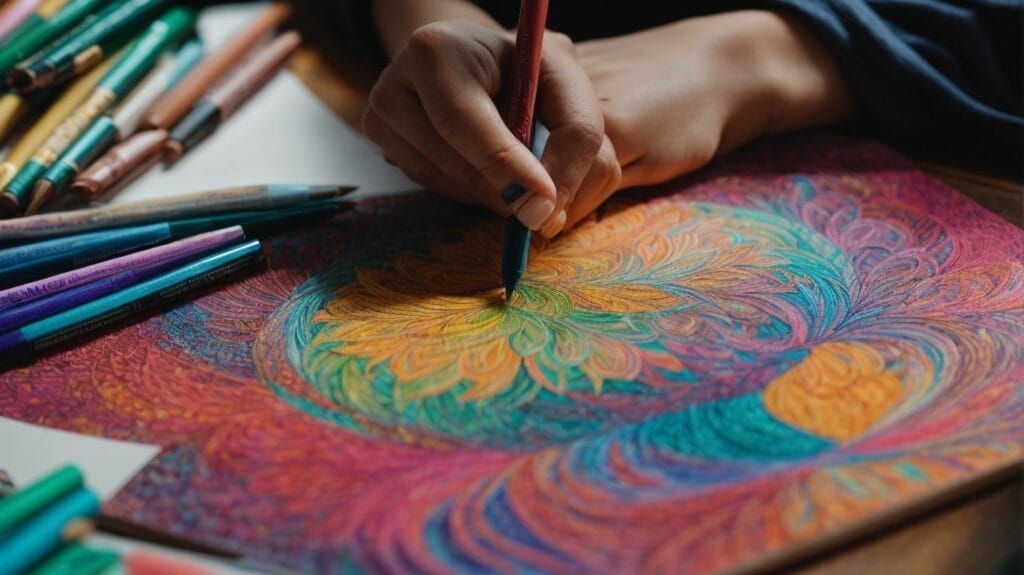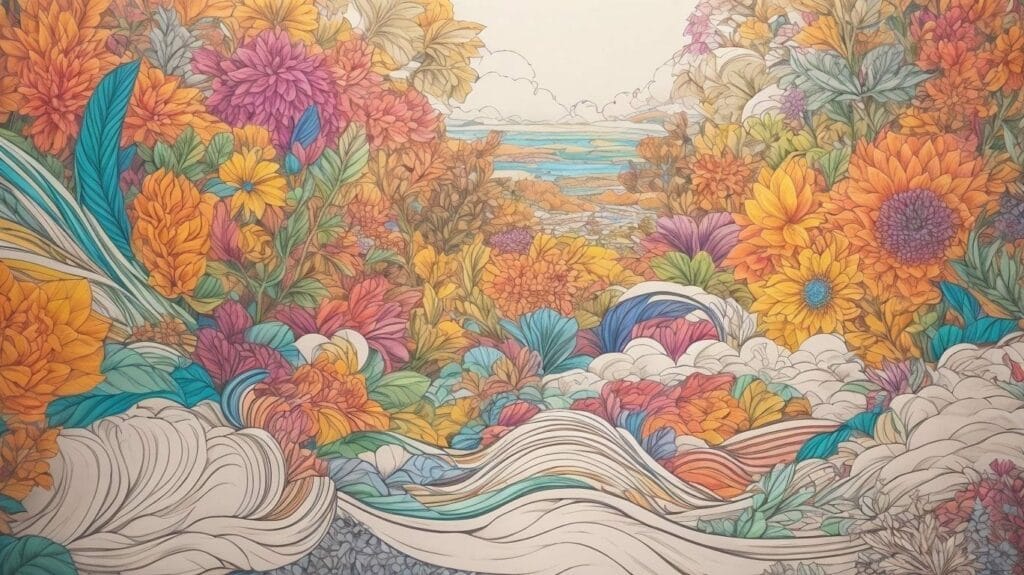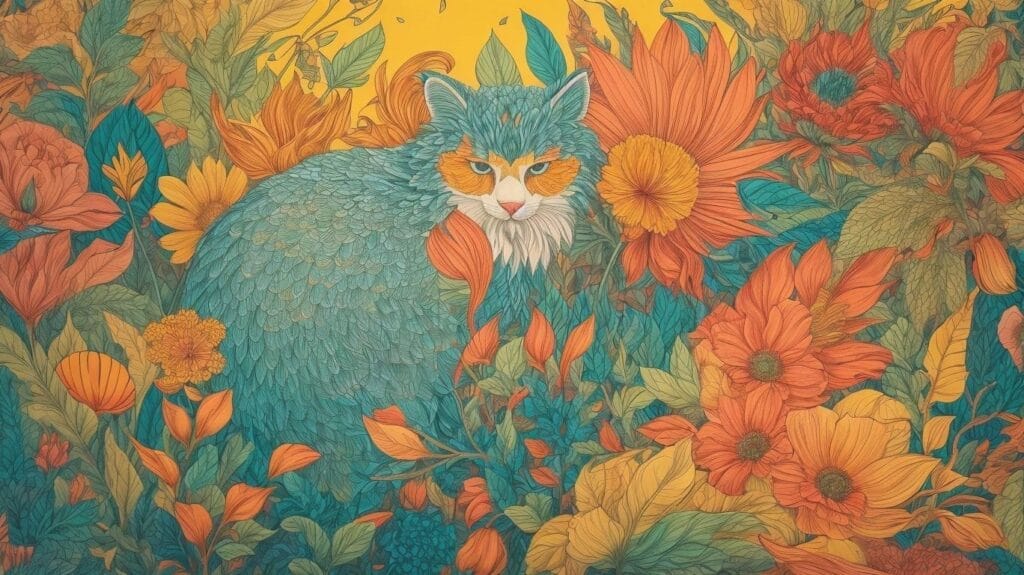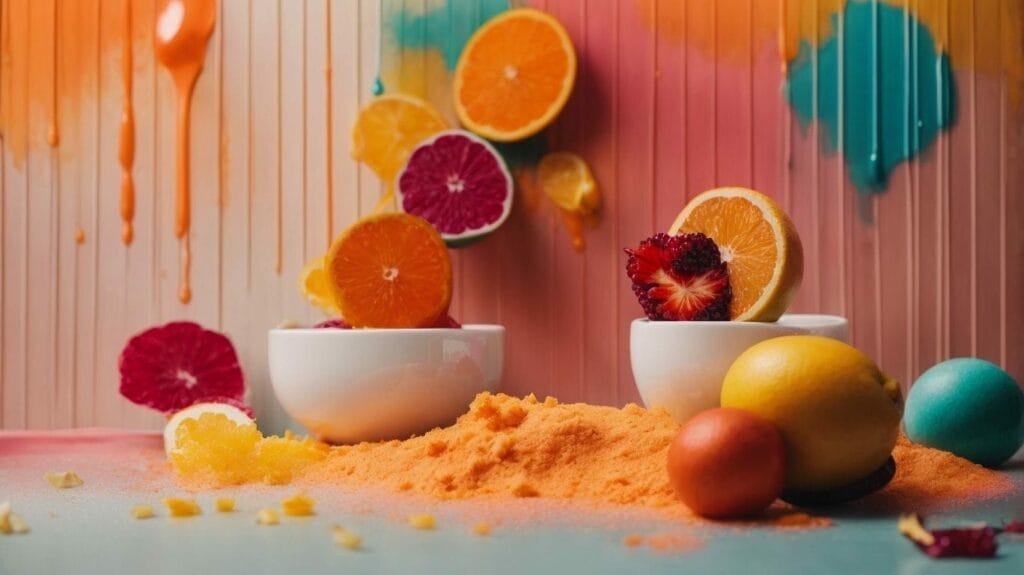Are you looking to add a new dimension to your coloring pages? Oil pastels can be a game-changer when it comes to creating vibrant and dynamic artwork. In this comprehensive guide, we will delve into the world of using oil pastels in coloring pages. From understanding the basics of oil pastels to selecting the right coloring pages and mastering different techniques, this article will equip you with the knowledge and skills to elevate your coloring experience.
Whether you’re a beginner or an experienced artist, there’s something for everyone in this exploration of oil pastel coloring. So, grab your pastels, and let’s embark on this colorful journey together!
Key Takeaways:
- Oil pastels are a versatile medium that can create vibrant and unique effects on coloring pages.
- When choosing coloring pages to use with oil pastels, consider the level of detail and complexity, as well as the theme or subject matter.
- To achieve the best results with oil pastels, it is important to properly prepare your workspace and experiment with different techniques such as blending and layering.
Introduction to Using Oil Pastels in Coloring Pages
Coloring activities have evolved beyond traditional crayons and markers to include the use of oil pastels, offering a unique and vibrant coloring experience for enthusiasts of all ages.
Oil pastels provide a smooth and creamy texture that allows for easy blending, making them perfect for creating intricate designs and intricate details on coloring pages. The rich pigments in oil pastels result in intense and vivid colors, giving life to landscapes, animals, and intricate patterns in coloring books. What’s more, they work wonderfully on various types of paper, from sketch pads to printable pages, allowing artists to explore their creativity in different mediums.
Understanding the Basics of Oil Pastels
To grasp the fundamentals of using oil pastels in coloring pages, it’s essential to understand their composition, texture, and unique characteristics that set them apart from traditional coloring mediums.
Oil pastels are made from a pigment mixed with a non-drying oil and a wax binder, giving them a creamy texture that allows for easy blending. One of the distinct properties of oil pastels is their opacity, making them ideal for layering and creating vibrant, intense colors. Their blend-ability lends itself well to creating smooth transitions and gradients, unlike the grainy texture of traditional crayons.
The introduction of water-soluble oil pastels has expanded the creative possibilities, allowing artists to blend colors with water to achieve a painterly effect or to create transparent washes similar to watercolors.
Benefits of Using Oil Pastels on Coloring Pages
The utilization of oil pastels in coloring pages offers a myriad of advantages, including vibrant color payoff, blend-ability, and the ability to achieve intricate details and textures with finesse.
The vibrant color payoff of oil pastels adds a remarkable depth to the artwork, making the colors pop off the page with an almost three-dimensional effect. The blendability of oil pastels allows artists to seamlessly mix and layer colors, creating smooth transitions and gradients that enhance the overall visual appeal. The ability to achieve intricate details and textures with finesse adds a captivating dimension to the artwork, enabling the creation of stunning, lifelike representations.
Challenges of Using Oil Pastels in Coloring Pages
While oil pastels offer a unique coloring experience, they also present challenges such as smudging, color mixing, and the requirement for specialized techniques to achieve desired effects.
One common challenge with oil pastels is smudging, as the creamy texture of the medium can easily transfer onto other surfaces, leading to unintentional blending of colors and loss of definition. Achieving smooth color blending can be tricky, as the inherent waxy nature of oil pastels can make it challenging to create seamless transitions between different shades.
Artists often encounter difficulties in obtaining precise details, as the medium does not lend itself well to intricate, fine lines. To overcome these obstacles, it is essential to employ specific techniques such as layering, blending with a light touch, and using tools like tortillions or blending stumps to refine and control the application of colors.
Choosing the Right Coloring Pages for Oil Pastels
Selecting suitable coloring pages for oil pastels involves considering factors such as intricate designs, texture-friendly surfaces, and the capacity for vibrant color expressions that complement the medium’s unique properties.
When choosing coloring pages for oil pastels, it’s essential to look for intricate designs that provide opportunities for detailed shading and blending, allowing the artist to create depth and dimension in their artwork. Texture-friendly surfaces, such as those with a slightly rough or toothy finish, are ideal for oil pastels as they enhance the adherence and blending of the colors, resulting in rich and nuanced effects.
Selecting pages with the potential for vibrant color expressions is crucial. These pages should allow for the application of multiple layers of oil pastels, enabling the artist to achieve intense and luminous hues, which are characteristic of the medium’s unique blending and layering capabilities.
Factors to Consider When Selecting Coloring Pages
When evaluating coloring pages for use with oil pastels, factors such as paper quality, design complexity, and the presence of outlined details play a crucial role in determining the suitability of the pages for optimal coloring outcomes.
High-quality paper is essential for oil pastel coloring, as it prevents the waxy medium from bleeding through or piling up, resulting in smoother and more vibrant colors. Intricate designs and detailed outlines offer more opportunities for blending and layering, allowing for richer and more nuanced color application on the page. These factors ultimately contribute to the overall visual impact and depth of the finished artwork. When selecting coloring pages for oil pastel use, it’s important to consider these aspects to ensure a satisfying coloring experience.
Popular Themes for Oil Pastel Coloring Pages
Certain themes and motifs are particularly well-suited for oil pastel coloring, such as nature landscapes, intricate mandalas, and fantasy-inspired illustrations, allowing for the exploration of diverse color palettes and artistic expressions.
Nature landscapes provide a rich tapestry for experimentation with oil pastels. Capturing the myriad shades of the sky, earth, and flora using the buttery texture of oil pastels can result in breathtaking and vibrant compositions. Mandalas, with their intricate patterns, lend themselves beautifully to the layering and blending capabilities of oil pastels, allowing for stunning symmetrical designs. Meanwhile, fantasy-inspired illustrations evoke a sense of whimsy and magic, perfectly complemented by the vivid and intense colors achievable with oil pastels.
Preparing and Setting Up for Coloring with Oil Pastels
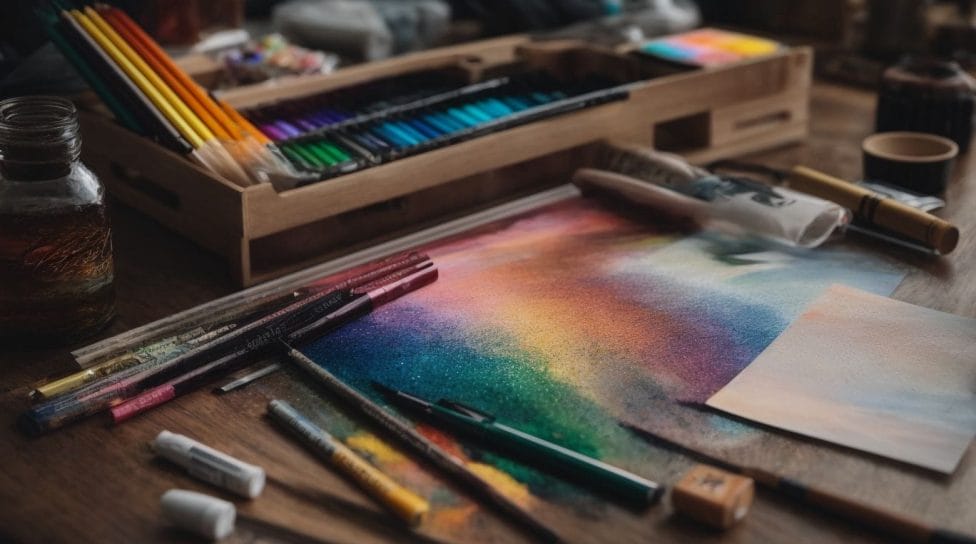
Credits: Loststorystudios.Com – Alan Davis
Before embarking on a coloring journey with oil pastels, it’s essential to gather the necessary materials and create a conducive workspace that allows for creativity and comfort during the coloring process.
Start by selecting a variety of oil pastels in different colors, ensuring a wide range to express your creativity. Consider using a sketchbook or textured paper as a surface for the colors to adhere to effectively. Gather a blending stump, cotton swabs, and a fixative spray to enhance the finished result.
When setting up your workspace, choose a well-lit area to work in, with ample space to spread out your materials. Arrange your coloring tools neatly within reach, and use a protective cover for your work surface to prevent any accidental smudging. It’s important to have good ventilation since oil pastels can emit strong odors.
Gathering the Necessary Materials
Assembling the essential materials for oil pastel coloring entails acquiring a set of quality oil pastels, suitable paper or coloring pages, and optional tools such as fine-point ink drawing pens to enhance details and outlines.
Quality oil pastels are vital to ensure smooth, rich color application, as they contain a higher ratio of pigment to binder. When choosing paper or coloring pages, select a medium with a slight texture to maximize the adherence of oil pastels and prevent smudging.
The optional fine-point ink drawing pens facilitate accentuating and defining specific areas with precision, adding depth and intricate details to the artwork. A blending tool or tortillon can be advantageous for creating gradients and blended effects in oil pastel compositions.
Setting Up Your Workspace for Oil Pastel Coloring
Creating an ideal workspace for oil pastel coloring involves ensuring adequate lighting, organizing the coloring materials, and establishing a comfortable and ergonomic environment that fuels creativity and inspiration.
Choosing the right lighting is crucial for accurately assessing colors and values. Natural light is often considered the best option, so try to position your workspace near a window to take advantage of this. If natural light is limited, invest in a high-quality full-spectrum light that mimics natural daylight. This will help avoid color distortion and promote a more accurate representation of your artwork.
Regarding organizing your coloring materials, efficiency is key. Keep your oil pastels sorted and easily accessible. Consider using a tabletop easel or a vertical storage solution to display your color choices, making it more convenient to pick and use them as you work.
Ergonomics should not be overlooked. Ensure you have a comfortable chair with proper back support and a table at a suitable height to prevent strain. A clutter-free workspace will also contribute to a clear mind and focused creativity. Organize your tools within reach without overcrowding the space. This balanced setup will facilitate a smooth, uninterrupted creative process.
Techniques for Using Oil Pastels in Coloring Pages
Unlocking the full potential of oil pastel coloring involves mastering a range of techniques, from basic coloring methods to advanced blending and texturing approaches that elevate the visual appeal of the finished coloring pages.
Starting with the basic coloring techniques, artists can create vibrant colors by layering and mixing different shades of oil pastels. Blending, a key aspect, can be achieved using various tools like cotton swabs, blending stumps, or even fingers to merge colors seamlessly.
Furthermore, texturing techniques such as sgraffito – scratching away layers to reveal underlying hues, and impasto – applying thick, textured layers, can add depth and dimension to the coloring pages, making them visually captivating.
Basic Coloring Techniques with Oil Pastels
Mastering basic coloring techniques with oil pastels involves understanding concepts such as layering, stippling, and scumbling to create vibrant and textured color applications on the chosen coloring pages.
Layering is a fundamental method in oil pastel art, where multiple layers of colors are applied to build depth and intensity. Stippling involves creating texture and shading by using a series of small dots or points, adding dimension and intricacy to the artwork.
Scumbling, on the other hand, utilizes a loose, broken application of colors to produce a soft, blended effect, perfect for creating atmospheric or ethereal elements.
Blending and Layering Techniques
The art of blending and layering with oil pastels allows for the seamless fusion of colors, the creation of gradient transitions, and the development of multi-dimensional effects that enhance the visual impact of the coloring pages.
When blending oil pastels, consider experimenting with complementary colors to achieve harmonious fusion, resulting in visually captivating artwork. Layering lighter colors over darker hues can produce stunning gradient transitions, adding depth and dimension to your pieces. Employing varied application techniques, such as stippling or sgraffito, can contribute to creating multi-dimensional effects that bring your coloring pages to life.
Creating Textures and Effects
Adding textures and effects to coloring pages with oil pastels involves techniques such as sgraffito, impasto, and wax resist to introduce depth, tactile elements, and visual interest to the artwork.
Using the sgraffito technique, artists can scratch into the layers of oil pastels to reveal the colors underneath, creating intricate designs and patterns. This method adds a unique tactile quality to the artwork, allowing the viewer to feel the raised areas.
Impasto, on the other hand, involves applying thick layers of oil pastels to the paper, resulting in a textured surface that adds richness and dimension to the coloring pages. The built-up layers of colors create a three-dimensional effect, enhancing the visual appeal of the artwork.
Incorporating wax-resist techniques into oil pastel coloring pages creates intriguing effects. By applying wax to specific areas before adding the pastels, artists can achieve a resist effect, where the colors repel against the wax, creating areas of light and highlighting specific elements in the artwork.
Finishing and Preserving Oil Pastel Coloring Pages

Credits: Loststorystudios.Com – Mason Campbell
Upon completing the coloring process with oil pastels, it’s essential to apply suitable fixatives and sealants to preserve the vibrancy and integrity of the artwork, ensuring long-lasting and professional-quality results.
After allowing the oil pastel artwork to dry thoroughly, the next step involves securing the colors and preventing smudging or fading. This is where fixatives come into play – they serve as a protective layer, locking in the pigments and preventing them from smearing or transferring. There are various fixatives designed specifically for oil pastels, and they are typically available in aerosol spray form or as brush-on solutions.
When using fixatives, it’s important to apply them in a well-ventilated area and follow the manufacturer’s instructions carefully to achieve optimal results. Consider using a workable fixative as an initial coat before adding a final fixative layer to achieve the desired level of protection.
The application of sealants adds an extra layer of protection and can enhance the overall finish of the artwork. Sealants are available in various finishes, such as matte, satin, and gloss, allowing you to tailor the final appearance of your oil pastel masterpiece to your preferences.
Fixatives and Sealants for Oil Pastel Art
Utilizing appropriate fixatives and sealants for oil pastel art serves to safeguard the colors, prevent smudging, and preserve the tactile nature of the medium, ensuring the longevity and visual appeal of the completed coloring pages.
When working with oil pastels, the colors can be vibrant, but they are also prone to smudging and blending if not properly secured. By applying a fixative to the finished artwork, the pigments are protected from dust, moisture, and potential damage, maintaining their original intensity and brilliance over time.
Using a sealant helps to enhance the tactile quality of the surface, creating a more durable and long-lasting piece that can be enjoyed for years to come.
Displaying and Storing Oil Pastel Coloring Pages
Properly showcasing and storing oil pastel coloring pages involves methods such as framing under glass, utilizing protective sleeves, and maintaining controlled environmental conditions to retain the artwork’s visual appeal and longevity.
Regarding framing oil pastel creations, using UV-protective glass can shield the colors from fading due to exposure to sunlight while also preventing dust and moisture from affecting the artwork. Consider using archival matting to keep the artwork away from direct contact with the glass, preventing any potential sticking or smudging.
Protective sleeves made from acid-free materials ensure that the oil pastel coloring pages are shielded from external elements, such as fingerprints, dirt, and moisture, which can compromise the integrity of the artwork.
Ensuring a stable environmental setting is crucial for preserving oil pastel artworks. This involves regulating temperature and humidity levels to prevent color fading, warping, or mold growth. Storing the artwork in a cool, dark, and dry area can help maintain its vibrancy and overall condition, making it enjoyable for years to come.
Frequently Asked Questions
How do I use oil pastels in coloring pages?
To use oil pastels in coloring pages, start by selecting your desired coloring page and then pick out the colors you want to use. Then, gently apply the oil pastels to the coloring page, using light pressure for a lighter color and heavier pressure for a bolder color.
What is the benefit of using oil pastels in coloring pages?
Using oil pastels in coloring pages allows for more vibrant and intense colors compared to other coloring materials. The texture of oil pastels also allows for easy blending and layering of colors, giving your coloring pages a unique and professional look.
How do I blend colors using oil pastels in coloring pages?
To blend colors using oil pastels in coloring pages, apply the colors you want to blend next to each other on the page. Then, use your finger or a blending tool to gently blend the colors, creating a smooth transition from one color to the next.
Can I use oil pastels on any coloring page?
Yes, oil pastels can be used on a variety of coloring pages, including printed pages, coloring books, and even on canvas or other surfaces. However, it is important to keep in mind that oil pastels can make the paper or surface oily, so it is best to use a protective sheet underneath when working on a coloring page.
Do I need any special techniques to use oil pastels in coloring pages?
Some simple techniques can help enhance your coloring pages when using oil pastels. These include layering colors, blending with your fingers or a blending tool, and using a white pastel to blend or create highlights. However, there is no right or wrong way to use oil pastels in coloring pages, so feel free to experiment and find what works best for you.
Are there any safety precautions I should take when using oil pastels in coloring pages?
While oil pastels are generally safe to use, it is important to keep in mind that they can be messy and may stain clothing or surfaces. It is also recommended to use them in a well-ventilated area, as the fumes from the oil can be strong. Additionally, be sure to wash your hands thoroughly after using oil pastels.
